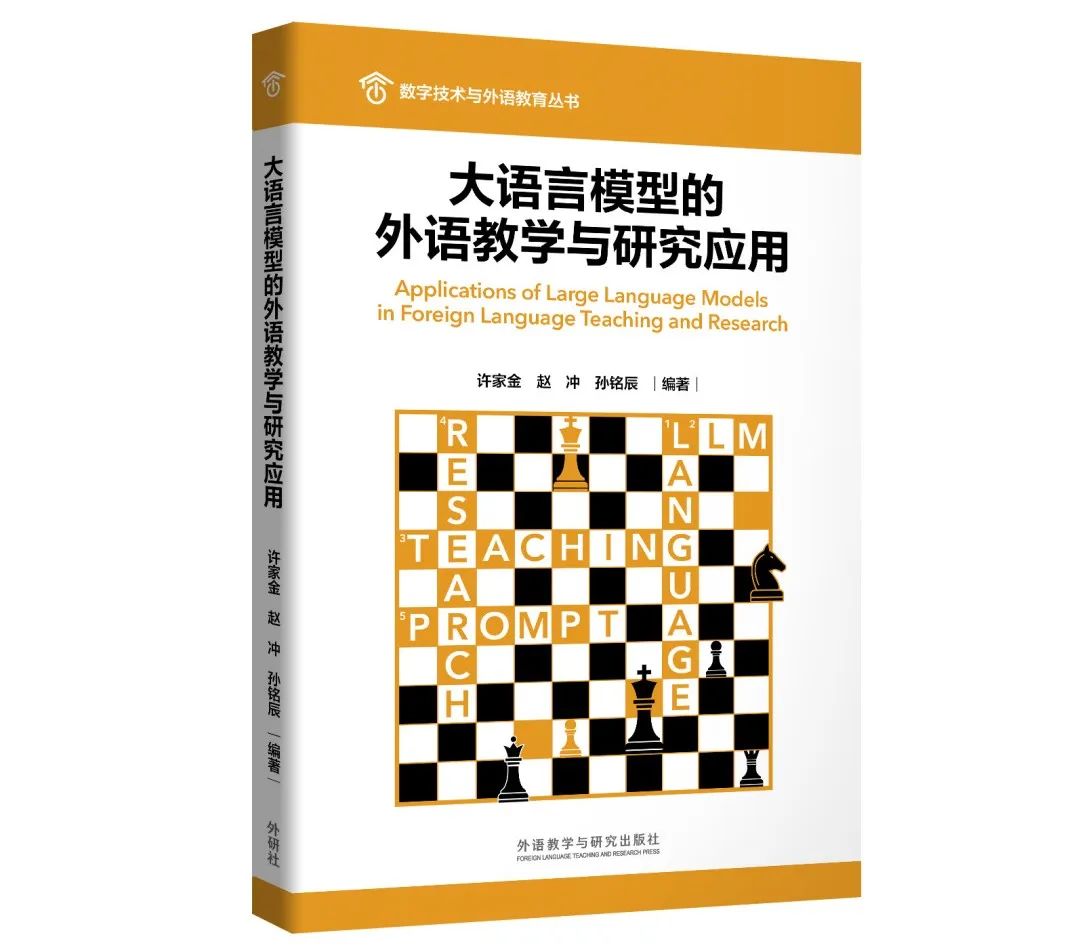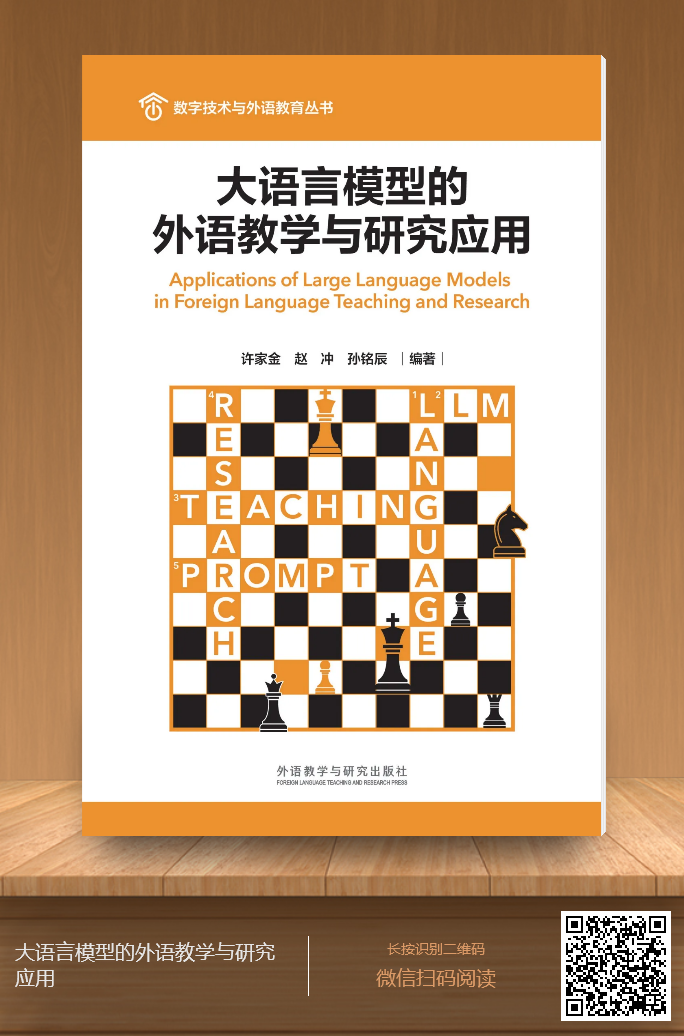翻译技术教育与研究 2025年01月03日 08:01 陕西

小编速览
大语言模型来帮忙:能汇总文献、设计访谈提纲、润色论文,助力高效科研,详见此书。
寒假就要来啦,对于科研人来说,寒假不仅是放松的好时机,更是专注科研、提升技能的黄金期!不过,面对堆积如山的文献、复杂的数据分析、让人头大的论文写作任务,你是不是感觉压力山大?
别担心!有了大语言模型这个“科研小助手”,寒假科研任务轻松搞定不是梦!今天,我们就来看看大语言模型如何助力外语研究,让你的寒假既充实又高效! 1. 同类文献汇总 文献综述是论文里绕不开的一关,但面对浩如烟海的文献,先读完再总结,真的让人头皮发麻。别急,大语言模型可以帮你轻松搞定这件“苦差事”!
比如说,你从Web of Science导出了若干关于multimodal corpus的文献,接下来该怎么办?只需要输入提示语,大语言模型就能迅速提取出文献的关键内容,生成一段简洁明了的总结,还能按照APA格式列出参考文献。 提示语(有删减)



The following are 10 literature entries exported from the Web of Science, with the “topic” set to “multimodal corpus”. Please summarize these 10 literature entries into one paragraph with APA in-text citation. Please list the 10 literature entries in APA citation format at the end of the paragraph.

结果(有删减)
Recent scholarship in multimodal corpus research spans a range of disciplines, methodologies, and applications. Huang (2018) and Huang (2021) explore the potential of multimodal corpora for pragmatic analysis in Chinese, proposing a framework for constructing and using such corpora to advance pragmatic theories. Caridakis et al. (2013) discuss the creation of a multimodal, cross-cultural corpus focusing on affective behavior and gesture expressivity, providing insights into cultural differences in non-verbal communication …
怎么样,是不是一目了然?不仅如此,大语言模型还能根据你的需求生成总结,你可以在提示语中要求“每篇文章的总结不超过100词”或“将输入的文章总结为一个自然段的文字,并给出主题句”,随心所欲,效率拉满!
寒假做文献综述再也不用熬夜爆肝了,有了大语言模型,轻松完成综述任务,科研人也能多睡几个好觉!
2. 访谈提纲设计 设计访谈提纲是质性研究的重中之重。一个好的提纲,不仅能帮助你精准挖掘受访者的想法,还能让整个访谈过程顺畅无比。不过,有时候设计访谈提纲真的好烧脑,既要贴合研究背景,又要兼顾逻辑和条理。
别慌,这种时候就轮到大语言模型上场啦!只需要提供研究背景和研究问题,就能帮你生成一套有条理、有深度的访谈提纲和问题,简直像一位贴心的“科研搭档”。
假设你的研究背景是这样的:某小组的8名学生刚刚完成了一门为期一个学期的二语写作课程,每节课都有课堂写作练习,练习完成后,学生会使用自动写作评估系统(AWE)来评阅自己的作业。研究的目的是想了解学生对AWE系统提升他们二语写作能力的看法。 提示语(有删减) Please design an interview outline and formulate specific interview questions for a qualitative study. Background: A group of 8 students recently finished a semester-long course in second language (L2) writing. Each session of this course included an in-class writing exercise. Upon completion of these exercises, students utilized the Automated Writing Evaluation (AWE) system to review and assess their written work. Research Question: What are the students’ perceptions of the AWE system in enhancing their L2 writing skills? 结果(有删减) 1. Introduction – Explain the purpose of the interview. – Assure confidentiality and anonymity. – Request consent for recording the interview for research purposes. 2. Background Questions – Can you briefly describe your experience with learning a second language before this course? – How comfortable were you with writing in this second language before starting the course? 3. Experience with the Course – What were your initial thoughts when you were introduced to the AWE system in the course? – Can you describe a typical in-class writing exercise and your process of using the AWE system? … 7. Suggestions and Feedback – Is there anything you wish was different about the AWE system? – Do you have any suggestions on how the AWE system could be improved for future learners? 8. Concluding Questions – How would you summarize your overall experience with the AWE system in this course? – Is there anything else you would like to share about your experience that we haven’t covered?
是不是很贴心?不仅逻辑清晰,问题还特别贴合研究背景,直接拿来用都没问题。而且,如果你需要中文访谈提纲,只需要在提示语里说明,模型也能乖乖满足你的要求。
有了大语言模型,这种“烧脑活”再也不怕啦!科研人只需要稍微润色一下,就能快速推进研究进度,让你的寒假科研任务更加轻松高效!
3. 论文语言润色 写英文论文的时候,大家是不是经常陷入这样的“词穷”窘境:
“Author A states that…” “Author B states that…” “Author C also states that…”
写着写着,自己都觉得无聊了,更别说审稿人了!学术写作可是门艺术,词汇和句式的多样化能让你的论文看起来更专业、更有深度。不过,想要摆脱这种“语言贫瘠”,光靠自己绞尽脑汁可不够,这时候就该请出大语言模型来帮忙啦! 提示语(有删减)




What are alternative phrases or expressions that can be used in academic writing to report findings or opinions of other researchers, replacing the commonly used “Author A states that”?

结果(有删减)
In academic writing, it’s essential to vary your language and avoid repetitive phrases like “Author A states that” to make your writing more engaging and sophisticated. Here are some alternative phrases and expressions you can use to report findings or opinions of other researchers:
1. “According to Author A …”
2. “Author A asserts that …”
3. “In the research conducted by Author A …”
4. “As per Author A’s research …”
5. “Author A contends that …”
6. “In the view of Author A …”
7. “Author A suggests that …”
8. “Author A maintains that …”
9. “Author A posits that …”
…
1. “Author A’s study highlights that …”
2. “Author A’s conclusion implies that …”
怎么样,是不是瞬间让你的写作变得“高大上”了?如果你想引出针对某观点的批评,或者需要一种更委婉的表达方式,也可以告诉大模型,让它帮忙找到合适的句式。
当然啦,大模型生成的表达虽然丰富,但在实际使用时,还是要结合具体语境来选择哦,毕竟学术写作讲究精准。
所以,寒假写论文再也不用为语言润色发愁了!有了大语言模型,词穷什么的根本不存在!
看到这里,是不是觉得大语言模型简直是科研人的“寒假救星”?无论是文献阅读、访谈设计还是论文写作,它都能帮你事半功倍!
以上案例都出自北外许家金教授及团队的《大语言模型的外语教学与研究应用》一书。如果你想了解更多关于大语言模型在科研中的实用方法和精彩案例,看这本书就对啦!

扫描下方二维码阅读样章 
这个寒假,让我们一起用大语言模型提升科研效率,轻松搞定任务!
快来留言分享你的寒假科研计划,或者聊聊你对大语言模型的使用体验吧!
特别说明:本文仅用于学术交流,如有侵权请后台联系小编删除。

